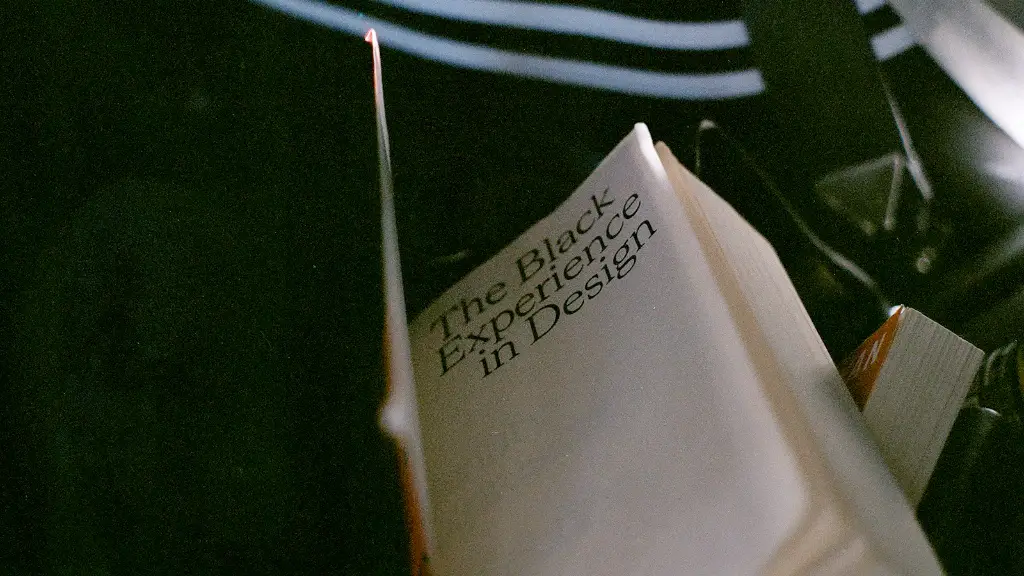What is Figurative Language
Figurative language is a form of communication that employs words in an imaginative, non-literal sense to convey an intended message. It’s used throughout literature, poetry and songwriting to convey notions, ideas and emotions in vivid and evocative ways. With figurative language, multiple sensory images can be conveyed in a single phrase. For example, the phrase “a raging sea” immediately conjures a mental image of powerful waves crashing against a shore.
Why is Figurative Language Used in Poetry?
The varied powers of figurative language can be explored to great effect in poetry. Such descriptive language can be used to create vivid images and evoke strong emotional responses in a reader. Literary devices, such as metaphor and simile, can be used in tandem to define a feeling or emotion, both accurately and succinctly. For example, the phrase “Her heart was a wilted flower” conveys the sense of disappointment and betrayal that a person might feel after a broken relationship.
The use of imagery, symbolism and alliteration can also help bring a poem alive. A poet can make use of description and metaphor to paint a picture in the readers’ mind that conveys a powerful message. An illustrative poem, such as “The Road Not Taken” by Robert Frost does just this. The poem follows the choice of a character faced with a metaphorical fork in the road, who must choose one course of action over another and account for it later in life.
The Functions of Figurative Language
Figurative language can also be used to captivate and engage a reader. Vivid and colourful description in a poem can create a hypnotic quality in the reader, allowing them to be transported to a place or time which may never have existed. An alliterative sentence, such as “The stream sparkles in the sun”, can invoke a soothing and calming effect on the reader and evoke positive feelings.
The power of figurative language can be used to add a certain deeper level to a work of poetry. For example, in John Keats’ poem “Ode on a Grecian Urn”, Keats makes use of allusion, symbolism, and metaphor to describe an antique urn. This helps to convey the feelings of nostalgia, longing and loss associated with the passing of time. The poem mainly speaks of the limitations of life, emphasizing the concept of mortality and how nothing is permanent on this Earth.
Devices Commonly Used in Poetry
Metaphor and simile are two of the most commonly used literary devices in poetry. A metaphor is the comparison of two unlike objects or ideas to show their symbolic resemblance. For example, a poet might use the phrase “my love is like a dove” to describe a person’s gentleness and grace. A simile is similar to a metaphor, except that it explicitly mentions the comparison. For example, a poet might use the phrase “My love is as gentle as a dove”. Both devices allow a poet to effectively convey a notion or feeling with a minimum of words.
Personification is another device used to give inanimate objects or abstract concepts a “human” quality. This could be as simple as assigning feelings to a tree or as complex as assigning a personality to a product of technology. For example, in her poem “Technology”, Maya Angelou personifies the machines being used when she tells the story of a fallen angel who has been “repaired and recycled”. By assigning a human quality to technology, Angelou is able to make a powerful statement about its implications.
The Benefits of Figurative Language
A major benefit of figurative language is that it can open up a poem to many different interpretations. Images and concepts can easily be conveyed without explicitly stating them, which allows readers to make different assumptions and conclusions. By not explicitly stating the message, diversity and creativity are encouraged, which is a great way for poets to create powerful and meaningful works.
Figurative language also allows a poet to make use of opposites, such as darkness and light, to suggest a more complex concept. It is through the use of figures of speech, such as oxymoron, paradox, and antithesis, that a poet can suggest a duality in the message. For example, in TS Eliot’s poem “The Love Song of Alfred J Prufrock” the speaker yearns for growth and the realization of inner potential, while also being aware of his own smallness and adversity.
The Hazards of Misusing Figurative Language
Although figurative language can be used to great effect when used correctly, it can quickly become overbearing or unclear when used incorrectly. If a metaphor or simile is used without proper understanding of its implications, then the message of the poem can be easily misinterpreted or diluted. Additionally, if too much figurative language is used in a poem, then it can become cliched and lose its effect.
Figurative language can also have the unintended effect of distancing the reader from the poem if it is used too much. In “Ode on a Grecian Urn”, Keats makes use of complex classical references to provide a historical context to the poem. However, these references can be difficult to understand, and this can result in the reader feeling alienated and disconnected from the poem.
Figurative Language in Popular Music
Figurative language is also widely used in popular music and rap. Lyricists often employ metaphors and similes to convey an emotion or story in a compelling rhyme. For example, the artist Young M.A makes use of metaphors to provide a visual representation of her ambitions in her song “Self M.Ade”. In this song she tells of her relentless drive to make her dreams a reality, comparing her dedication to “gold teeth” and “bottles of Cris”.
Popular music also often makes use of other rhetorical devices such as hyperbole, understatement and repetition to emphasize important statements in a song. Additionally, the lyrics of popular songs are often more direct and straightforward than those found in poetry, which allows the listener to connect more easily with the message of the song. In this way, popular music can be seen as a more accessible form of figurative language.
Figurative Language in Digital Media
The use of figurative language can also be seen in many digital media outlets. Platforms such as Twitter, Instagram, and YouTube make use of language meant to draw in viewers, convey emotion with brevity, and create an atmosphere of exclusivity. Phrases such as “pick your peak”, “treat yourself” and “trending now” are used in order to capture the attention of the viewer and make them feel as though they are part of a select group. This type of figurative language helps cultivate an atmosphere of organisation, exclusivity and ambition.
Figurative language is also used to great effect in memes. Instead of focusing solely on the image, the text accompanying it often serves to develop and expand on the meme’s message. This is done mostly through the use of puns and wordplay, which can work to great effect in order to convey a quick, but powerful message. For example, in the famous ‘American Chopper Argument Meme’ the text serves to build up the internal conflict between the father figure and son figure represented in the image.
Conclusion
Figurative language has been used for thousands of years and is still used today to capture the emotions and ideas of its users. In poetry, figurative language allows writers to convey notions, ideas, and emotions in vivid and evocative ways. Figurative language can also be seen in popular music, digital media, and memes, where it is used to craft powerful messages and captivate the viewer. As long as language exists, so too will figurative language and the powerful messages it conveys.




